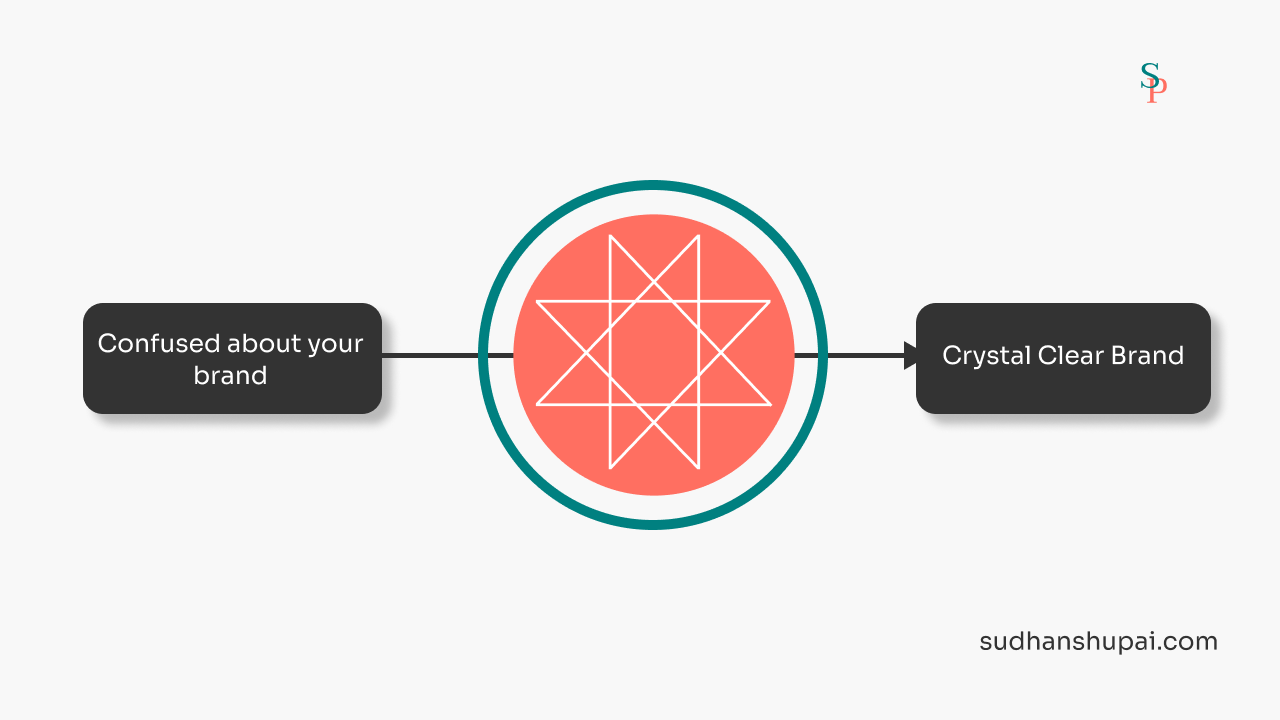Octagram framework to creator brand clarity
“Start creating even if you’ve got no brand clarity yet.”
I’m sure you’ve heard this at some point. But I think we’ve taken this thinking too far.
The 3 big reasons are –
- You lose a ton of time thinking and navigating with trial and error
- End up building a commodity because you went in blind.
- A slower rate of monetization with less impact
But what if I tell you that I have a way to create rapid brand clarity, and find monetizable skills and the right kind of audience all at the same time?
I’ll show you 3 things:
- the secret and underlying philosophy of creator branding,
- then give you the framework and
- end with a personal mini-case study.
You can skip around for efficiency, but if you can resist jumping straight to the framework, I’ll give you the secret first.
let’s get into it ↓
The Secret to a Creator Brand.
The reason people struggle with defining or building their personal brand comes down to 5 common reasons:
- Not knowing how to start building your brand
- Struggle with picking the right niche
- Picking the wrong audience
- Crafting the wrong offer
- Staying Consistent
How do I know this?
Cause your boy knows firsthand the damage it can do. And I understand how scary it can be.
But after 3 years of working as a freelancer, you learn a thing or two. The most important being…
You don't build a brand!You just can't.It's the single giant mistake every new creator makes.You begin with step 2: what is the end goal you wanna reach?When you should have started with Where you've been. Share on XSo, I’ll show you how I gained personal brand clarity, and how I would help any other creator do the same.
The Octa-gram Framework of Rapid Creator Brand Clarity

Step 1: Reset what you know about personal branding.
Empty your mind. Be formless. Shapeless. Like water. You put water into a cup, it becomes the cup. You put water into a bottle, it becomes the bottle. You put it in a teapot, it becomes the teapot. Water can flow, or it can crash. Be water, my friend.
Bruce Lee
You can’t learn or build something new if you don’t let your mind explore opportunities with zero beliefs.
Unfortunately, most people start with the:
- What’s my niche?
- What content I should post?
- How much should I engage?
- What is my position as a brand?
When in reality you need a clean slate and start with the most basic stuff…
Who are you? And what are you not?
Let me tell you why this is important…
After I shut my writing business down, I had a lot of time to think for myself and what I would want to do further. I journaled for days and found that… I had built my brand around what people wanted, not around what we both needed… which made it tough to be consistent and give it a progressing direction.
The business that I wanted to build – My dream business – was nowhere close. It was on a different road altogether. All because I had no business or brand clarity.
You may want to build your dream business too, but might have taken the advice of the most popular creators you found and copied their roadmap word for word.
So I found a way to discover a brand that aligns with my lifestyle, that way even if all is lost in building a business… I would still have my original brand reputation to start a new venture in a new direction making it an asset for both me and the creators I interact with.
Step 2: From Anti-niche to pro-people
The first thing personal branding gurus will tell you is to find your niche.
If you are from that school of thought, I suggest you stop reading right now and do something else. (Stuff yourself with cake or donuts for all I care)
As far as I’m concerned, you don’t serve niches – you serve people.
To add to that, the mistake I made in the past, as do other new creators is “Picking a NICHE”… Well, I’ve got news for you, it’s not some ice cream flavor you can pick dear OBI WAN.
So who do you work with, then?
Here’s how I did it: Everyone has a spectrum of people who they can help that is defined by their own life experiences and skills they gained.
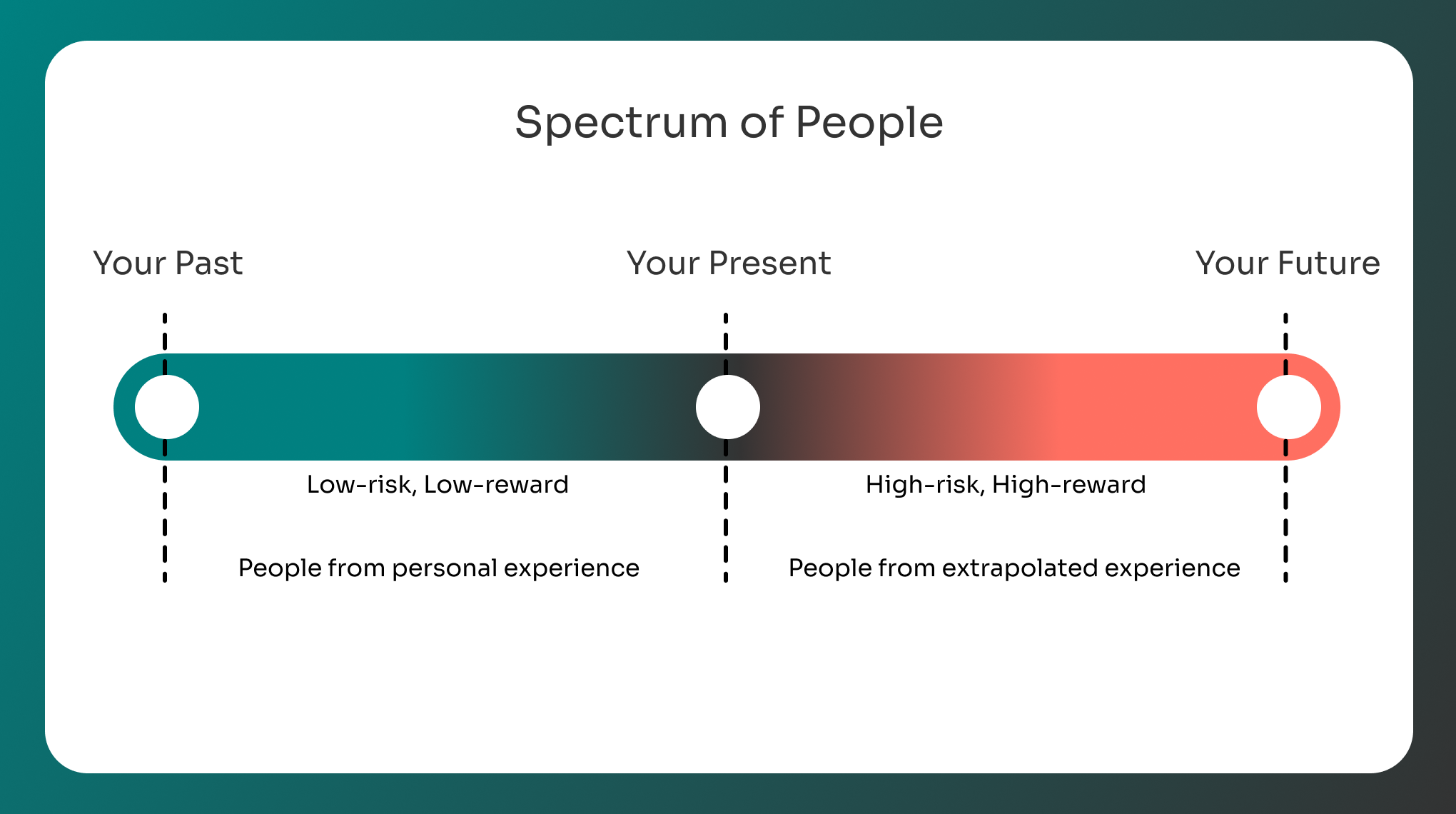
This spectrum stretches from
- Past: People you can help from your own experience (low-risk, low-reward)
- Present: You help people with what you are experiencing.
- Future: People you can help from extrapolated experience (high-risk, high reward)
I’ll give you my example:
- Past: I was a student in Nutritional sciences & I have worked as an intern, as an employee, as a freelancer, and as a business owner.
- Present: Creator, writer, author, solo-business builder
- Future: 6-8 figure creators, Founders, and Business owners who have Exit.
So the people I can help effectively are – Business owners, Creators, and 9-5ers. Because I know what these experiences are. I could work with people in the Health Care Market if I wanted to.
I can adapt skills, to people closest to my circumstances and create my niche. You can do the same.
Just shift your focus from NICHE to PEOPLE and you’ll start finding opportunities to carve out your corner in the world.
💡 Action item: Make a list of important stages of your life: Past, present, or future, and find 3-5 groups of people that you’ve been a part of.
Step 3: What are your Right Market Skills?
Did you start writing so you can build a brand? Or did you start learning video editing to build a brand? Or did you start learning a skill so you can monetize it?
That’s the most common advice you get, right?
Learn a high-paying skill so you can monetize!
Most people take it too.
That just ends up being a disaster later on because the “Glitter of Money” takes you away from one key part of your personality.
You end up asking for things that you might not even vibe with.
But what If you have high-income and high-leverage skills stuck in you? All you need to do is find them. And here’s your solution to find them.
Make a list of 100 things you already have or are passionate about… no matter how mundane. It could be anything from skills, talents, interests, physical traits, voice… anything. (I’ve learned this from one of Chris Do’s videos on personal branding.)
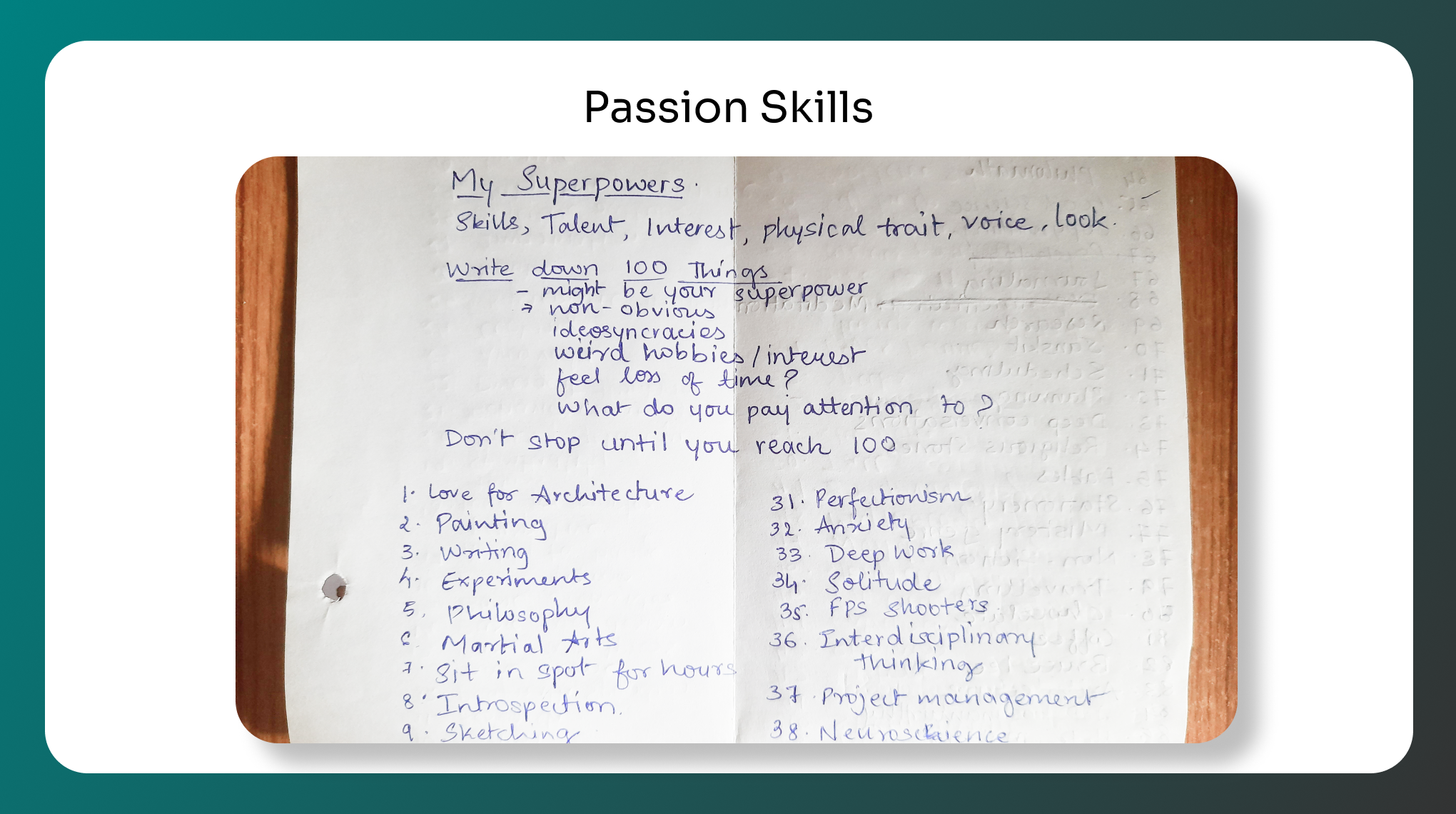
When you start writing these, the first 20 will be a breeze, but just don’t stop until you reach 100.
This exercise forces you to think inward and find things that you already have or love to do instead of searching for the gold at the end of a road you might not need to take just yet.
Then pick 10 passion skills that have the most in common, and find marketable skills that use at least 5 to the fullest.
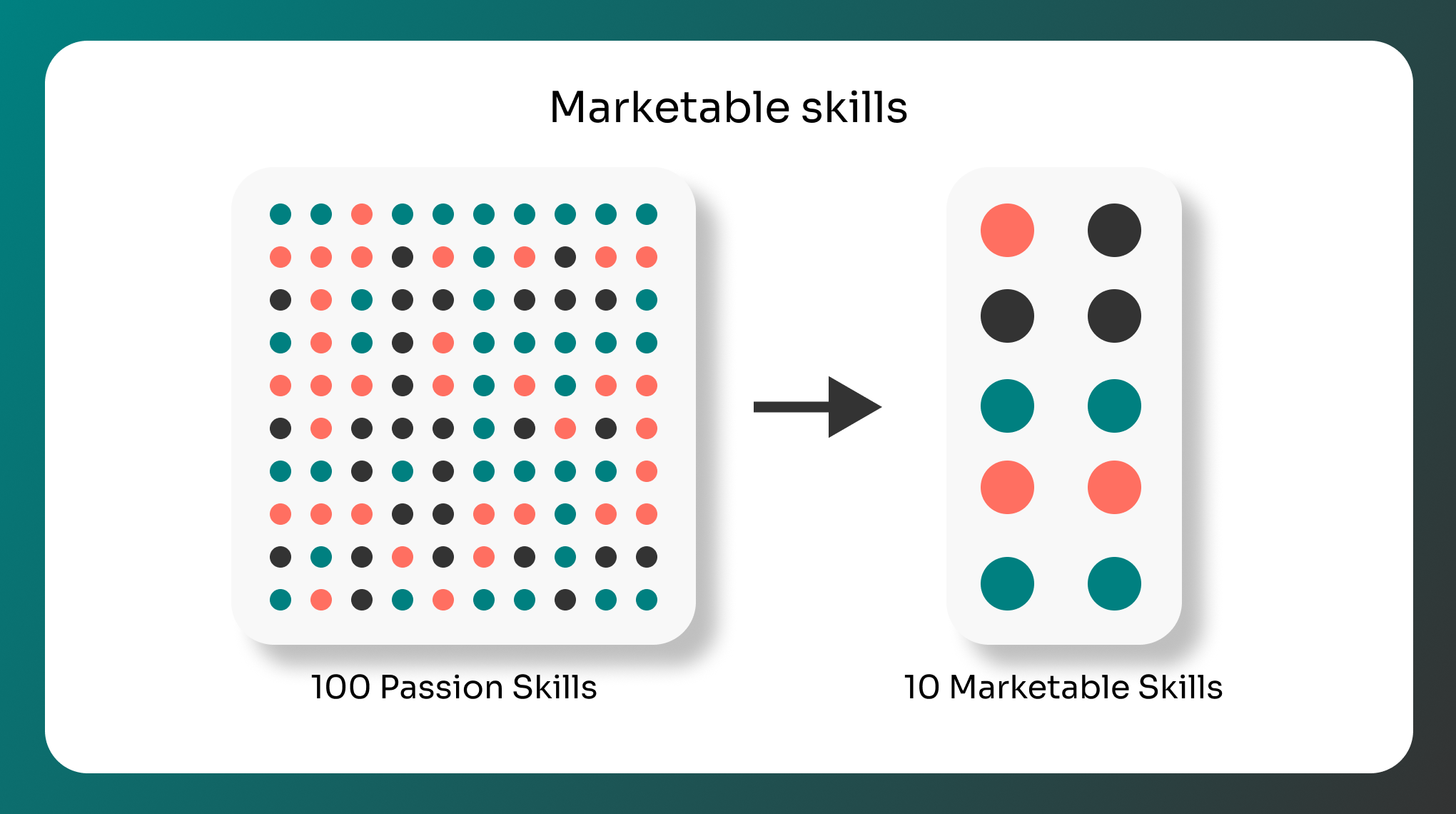
This gives you marketable skills extrapolated on your unique experience, passion, and knowledge that is closest to what you truly are.
💡 Action item: make a list of 100 things that you know or are passionate about. It could be anything from skills, talents, interests, physical traits, voice, and find the 10 that have the most in common.
Step 4: What sort of personality are you?
There’s a lot of debate about personality types. And it’s been like that throughout history, but let’s get away from that for a second.
I’m not saying you should categorize yourself as the MBTI or Character Archetypes used in storytelling, What I’m saying is far more simpler. Spend time with yourself and get to know yourself.
Knowing others is intelligence; knowing yourself is true wisdom.
Lao Tzu
Are you a perfectionist? Do you like living a high-stress life? or are you inclined to more creative endeavors?
The way you approach life situations has a lot to do with the way your brand will communicate and the skills that you will thrive in.
Imagine being a strategist, who may become emotionally biased during decision-making.
Or being a copywriter who is not emotionally inclined at all.
See the problem here?
💡 Action Item: Spend time with yourself, analyze your life’s most important events, analyze your everyday behavior, and ask your parents or friends, or anyone who can give you an objective perspective about you.
Step 5: What are your goals in life?
It’s counterintuitive, but your life goals make your journey and positioning unique… they will also dictate the decisions you take and the unique angle your content will produce.
And this is not your: I want to work for the betterment of humanity… or some other cliché. Think about something personal. Think about how you would like your lifestyle to be 5 years down the line.
It could look like anything from traveling the world, to being an industry leader to working with certain people or writing books till the end of your life.
The goals must fundamentally affect you.
I found this to be effective in my journey because I used to deal with mental health issues, and some days, it was just too hard to focus on the brand message or get into the spirit of work.
Having your own goals as guiding principles of your brand makes it easier to align actions, messages, and positioning even without a full-blown brand strategy in place.
It helps in getting your brand started even when you don’t have all the pieces of the puzzle and in the dark.
💡 Action item: List out 5 of your life goals that you personally want to achieve.
Step 6: How can you use your market skills and personality to achieve that goal with a potential offer?
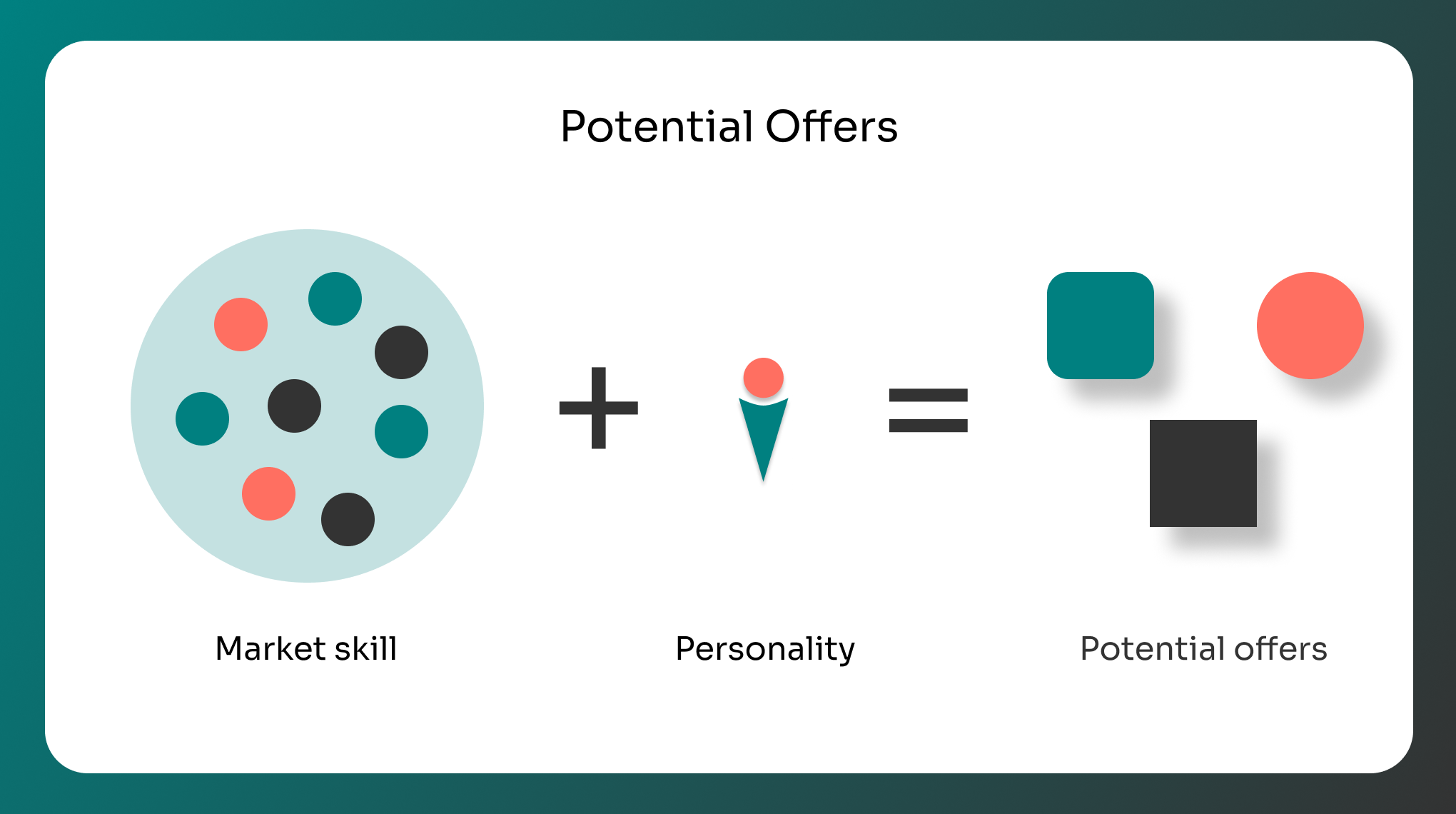
Remember the list of 10 marketable skills you found in step 3. It’s time to put them to use. So your job now is to find the most effective combinations of those skills that contribute to the strengths in your personality.
I’ll tell you why this is important
When I started my writing business, I started as a content writer. But my lack of personal insight into myself made me hate the work down the line. And I shut everything down. Part of the reason is… I’m too artistic and way too close to my work.
That also means I have a tough time getting detached from my creations and giving someone else credit for the creation. and I’m an introvert, so love spending time thinking, exploring, and learning before I create anything.
Does this mean I can’t work with others or help others?
NO.
I just have to find the right combination of skills and personality that I can enhance to the max.
You might have a similar situation going on.
But here formula
Market skills + Dominant Personality Trait = Potential offers.
💡 Action item: Try to mix your 10 marketable skills and your personality. Do some research as to what high-order skill fits the maximum combinations that will eventually lead you to your ideal life.
Step 7: What’s the best group of people you can help with that combination of results?
You’ve got a skill or rather an offer. Now all you need to find is the people you can help that skill with achieve an outcome.
And that comes from the list of people you made in step 2.
Example:
Let me give you 2 scenarios: as a student and as an employee.
1. Say you are a student, and your choice of marketable skill is COPYWRITING. Just ask yourself who can you help the most. The most obvious answer is Creators, maybe even startups (since they have fewer employees and can outsource some tasks), or marketing agencies that can outsource work to you.
2. Now imagine being an employee, and your choice of skill may be graphic design. Who can you help? The obvious options would be companies in the adjacent industry, other design agencies, and other creators or if you leave your job you can work within the same industry.
Notice that I said: Who you can help, not who you would like to help?
Most new creators either underestimate their capabilities or overestimate what they can do. So the most important thing you can do is find a combination that fits you, your skill, and the people you can help.
💡 Action item: Make a list of 3 combinations that go like Skill + People. Choose the one that seems most interesting or the one that you can do for the longest time.
Step 8: Boil it down to a line.
Think Twitter bio. But better and more creative.
Everyone uses this basic formula: I help X people (target audience) achieve Y (results) without Z (pain point).
There’s no question that it works, but it’s used by everyone. And the first rule of marketing says to do the opposite of what’s working in the market.
If you’ve done your job right, and if you got some level of brand clarity… this step should be easy for you without sticking to the traditional statement.
Here’s a few amazing examples:
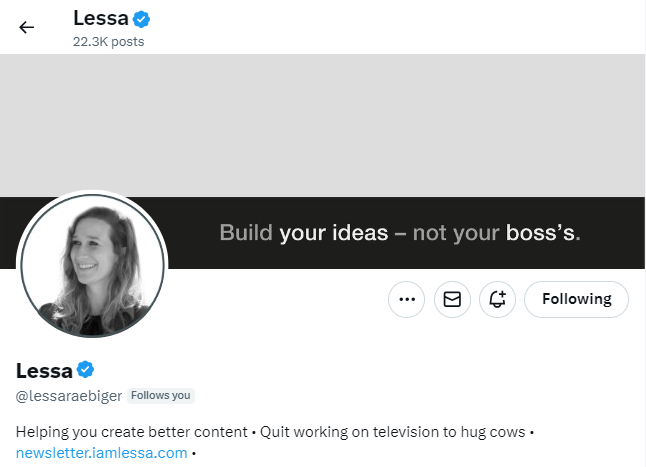
Lessa: Helping you create better content • Quit working on television to hug cows
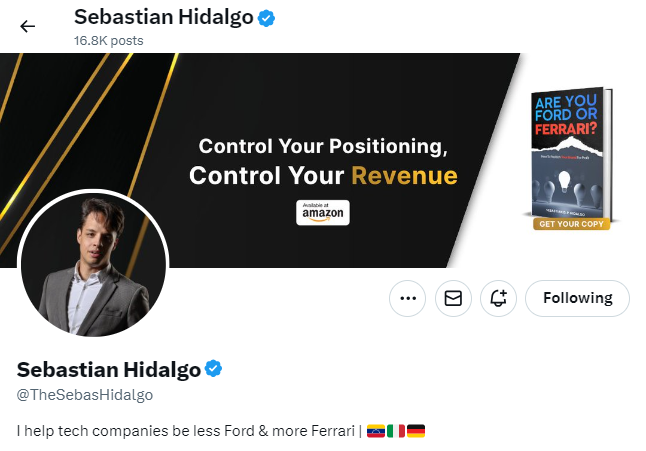
Sebastian Hidalgo: I help tech companies be less Ford & more Ferrari
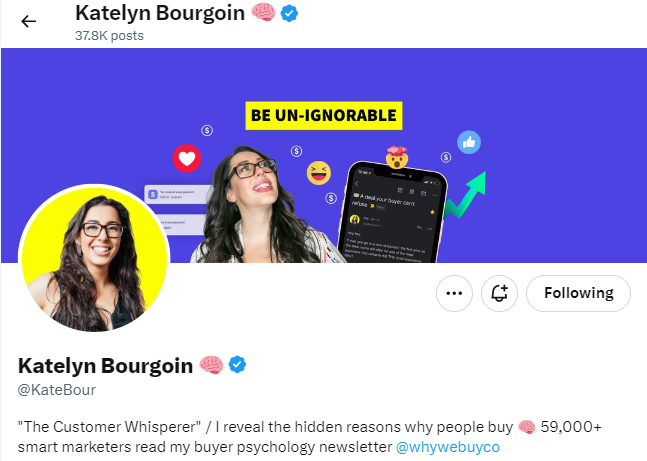
Katelyn Bourgoin: “The Customer Whisperer” / I reveal the hidden reasons why people buy59,000+ smart marketers read my buyer psychology newsletter
But it should be a line that combines the people you help, the skill you use, the problem you solve with the skill, and your personality, and has to be personal to you.
Here’s what I landed on: I’ll build a resource and offer a hub for solo creators who want sustainable freedom and a creative business built on their terms.
A Mini case study of my brand clarity.
When I shut my old business down, it was built on a brand as a writer. But after I shut it down I was clueless for most of 2023.
- No clue about offer.
- No clue about content.
- No clue about personality.
But in November 2023, I tested a hypothesis and found all the solutions to my problems. I’ve got:
- A working offer that I’m gonna start testing in Dec
- An entire year’s worth of content in my newsletter calendar
- The truest and closest reflection of my personality that is helping me stand out from other creators.
If I were to break it down, my brand is being built on a combination of:
Passion Skills: Writing, copywriting, creativity, storytelling, books, art, philosophy, psychology, branding, and many more.
Personality: An ardent Introvert, altruistic, sensitive to criticism, perfectionism, hates ordinary, tends to overthink, works alone, learns wide not deep, loves thinking.
Marketable skills: Writing, copywriting, brand strategy
People: I’ve worked as an intern, as an employee, as a freelance content writer.
The 2 best outcomes:
1. The Ghostwriter: Writing + Creating content for Startup owners and creators with a DONE-FOR-YOU service with options like Twitter content, newsletter content, scripts, market campaigns, copies, etc.
2. The Creator Consultant: Covers more skill and angles and lets me go on a self-exploration journey all the while helping entrepreneurs or creators build and boost their business with newsletters, masterminds, consultations, e-books or courses with DONE-WITH-YOU or DO-IT-YOURSELF services.
I chose the latter because I’ve already done the first bit for business and help personal brands. And learned that I wasn’t good at it.
I wanted the self-exploration route, become an author and an artist cause those are some of my personal life goals, and build a real asset for other people to use.
Key Takeaway
Your creator brand isn’t a product. It’s a byproduct of a combination of patterns that comes from skills, personality, and life goals.
If you try to build it from the outside in, it’ll end up being superficial and dishonest.
While trying to become an Authentic Brand, newbie creators miss out on something important. And that is an Honest Coherent Narrative.
The only way to do that is by taking an Inside journey of self-exploration.
So a quick recap
- Reset what you know about personal branding
- Go Anti-Niche, be Pro-People
- List down your Passion Skills to find the 10 marketable skills
- Get clear about your personality
- Write out your Big Goals in Life
- Find out how you can use your Market skills and personality to achieve that goal with a potential offer.
- What is the best group of people you can work with the offer you created
- Boil it down to a line
Don’t build blind.
Start creating your Empire today!
